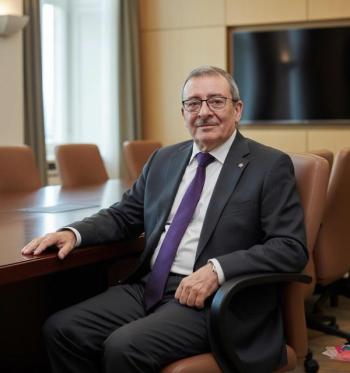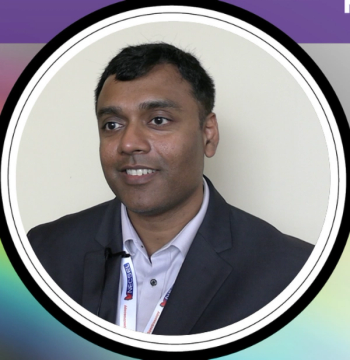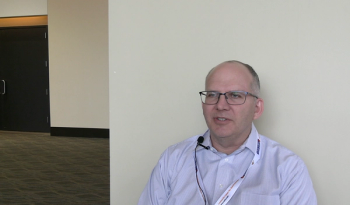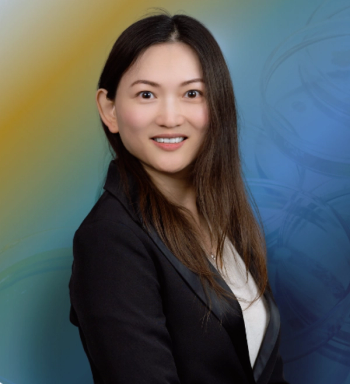
Optical Coherence Tomography for Esophageal Imaging
Optical coherence tomography (OCT) is an emerging technique for medical imaging that uses light to see deep inside tissue. Rohith Reddy, who is a postdoctoral research fellow at the Harvard Medical School and Massachusetts General Hospital in Boston, has worked to develop an OCT device for noninvasive diagnosis of a precancerous condition, Barrett’s esophagus. Reddy is the winner of the FACSS 2016 Innovation Award. He recently spoke to us about these efforts.
Optical coherence tomography (OCT) is an emerging technique for medical imaging that uses light to see deep inside tissue. Rohith Reddy, who is a postdoctoral research fellow at the Harvard Medical School and Massachusetts General Hospital in Boston, has worked to develop an OCT device for noninvasive diagnosis of a precancerous condition, Barrett’s esophagus. Reddy is the winner of the FACSS 2016 Innovation Award. He recently spoke to us about these efforts.
Your work has involved the use of a tethered optomechanically engineered capsule for endomicroscopy of the gut wall in human subjects (1,2). Can you please describe the device and discuss how this endomicroscopy technique differs from standard endoscopy techniques used for imaging the gastrointestinal tract?
We have developed a new capsule-like device that is capable of disease diagnosis when swallowed. As the capsule goes through the food pipe (esophagus) it performs a scan of the entire esophagus at a microscopic scale. We obtain images of the esophagus that can be reconstructed into a 3D scan, and the medical doctor can perform diagnosis by studying these images for abnormalities. There is a tether attached to the capsule that transmits data and allows us to pull the capsule back. The capsule is very smooth and there is little or no discomfort to the human subject–patient.
The current standard clinical procedure for using endoscopy to identify diseases like Barrett’s esophagus involves giving a subject anesthesia or sedation. The doctor uses a device similar to a small video camera, inserts it through the mouth and looks for abnormalities in the esophagus through visual inspection. If there are suspicious regions found, then a small portion of tissue is cut out for analysis under a microscope. The procedure typically costs several thousand dollars and often requires facilities that are not available in typical primary care clinics. In our work, we address diagnosis accuracy, safety, and ease of use as well as costs.
What are the technique’s advantages in terms of ease of use and the type of information provided? Do patients need to be sedated?
A camera can only see the surface of the esophagus whereas our technique can see a few millimeters deep into tissue, thus improving the chances of better diagnosis. Our device is based on OCT, which is different from regular video cameras. Regular cameras provide two dimensional (2D) pictures, but OCT provides 3D pictures akin to holograms. Moreover, our capsule procedure does not require sedation or anesthesia and can be administered by a trained nurse as opposed to a doctor specializing in endoscopy. The entire procedure can potentially be done in a primary care setting in 5 minutes or less. The resolution of images is much higher than that provided by a video camera. We obtain microscopic images of the entire esophagus as opposed to tissue samples from just a few regions. With our most recent work, we have managed to reduce the cost of the device dramatically so as to facilitate widespread adoption of this technology.
What are the limitations of the technique? Are some patients unable to be examined using this approach?
As with any technique, our capsule device also has its limitations. There are some people who have difficulty swallowing and the capsule may not be suitable for some of them. The size of the capsule is on the larger side for an average tablet that one swallows, and we are working on making the capsule even smaller. This capsule has not been tested in infants or children. The technology is relatively new and more patient data need to be collected before it becomes a standard clinical tool.
One must keep in mind that this capsule is a diagnostic device and our procedure should be compared to endoscopy or other alternatives, which are relatively invasive procedures that require sedation and cannot be done routinely or easily. We have requested all our human subjects to evaluate our capsule procedure in terms of comfort, ease of swallowing, and several other factors, and a vast majority of the subjects have had positive experiences.
Your 2016 FACSS Innovation Award presentation at SciX (3) discussed the use of the device for OCT to screen patients for Barrett’s esophagus. What is Barrett’s esophagus, and how does the OCT technique differ from the current method for diagnosing the condition?
Barrett’s esophagus is a precancerous condition that indicates a significantly increased risk of developing esophageal cancer. Esophageal cancer is a deadly disease with the patient’s chances of surviving for more than 5 years being less than 20%. A reason why the survival rate is so low is that the cancer is often detected too late. We are trying to build a device that makes it easy and inexpensive to test for Barrett’s esophagus. We envision this device being used routinely in primary-care settings with patients for whom there is a suspicion of Barrett’s esophagus. As I mentioned previously, current methods of diagnosis are relatively expensive, require sedation, can only see the surface of tissue and not deep inside. Only a small part of the esophagus can be examined microscopically, and there is an increased chance of missing abnormal tissue when sampling. OCT sees deep inside tissue and provides microscopic images of the entire esophagus. The accuracy of diagnosis, safety, ease of use, and cost are important considerations to making such a device a routine screening tool for Barrett’s esophagus.
What improvements have been made to the device since it was first developed?
There have been several innovations to the device since its inception. The cost of the device has been reduced dramatically and the disposable costs are just a few tens of dollars per use. The image quality has also been improved significantly, and artifacts in the images are also reduced. We have improved the design of the capsule and made it easier to manufacture as well as easier to use. We have streamlined different processes and test different components once per design, once per device, or once per use as required. We follow a rigorous design control process to ensure that the device functions effectively.
What are the next steps in your research?
We want to test the device and establish its efficacy for Barrett’s esophagus diagnosis in a large patient sample. In the near future, we intend to start a multicenter clinical study where the same patients–human subjects are imaged every year for several years. The fact that the device is inexpensive and easy to use makes it practically possible to conduct such a study. We also want to use this device for studying other regions of the body, such as the small intestine. More generally, this approach allows us to understand disease progression over time inside humans, which is challenging to do on a microscopic scale.
References
- M.J. Gora, J.S. Sauk, R.W. Carruth, K.A. Gallagher, M.J. Suter, N.S. Nishioka, L.E. Kava, M. Rosenberg, B.E. Bouma, and G.J. Tearney, Nature Medicine19(2), 238–241 (2013).
- M.J. Gora, J.S. Sauk, R.W. Carruth, W. Lu, D.T. Carlton, A. Soomro, M. Rosenberg, N.S. Nishioka, and G.J. Tearney, Gastroenterology145, 723–725 (2013).
- https://www.scixconference.org/program/final-program?symposium=16AWD09&p=7985/#session
Newsletter
Get essential updates on the latest spectroscopy technologies, regulatory standards, and best practices—subscribe today to Spectroscopy.





